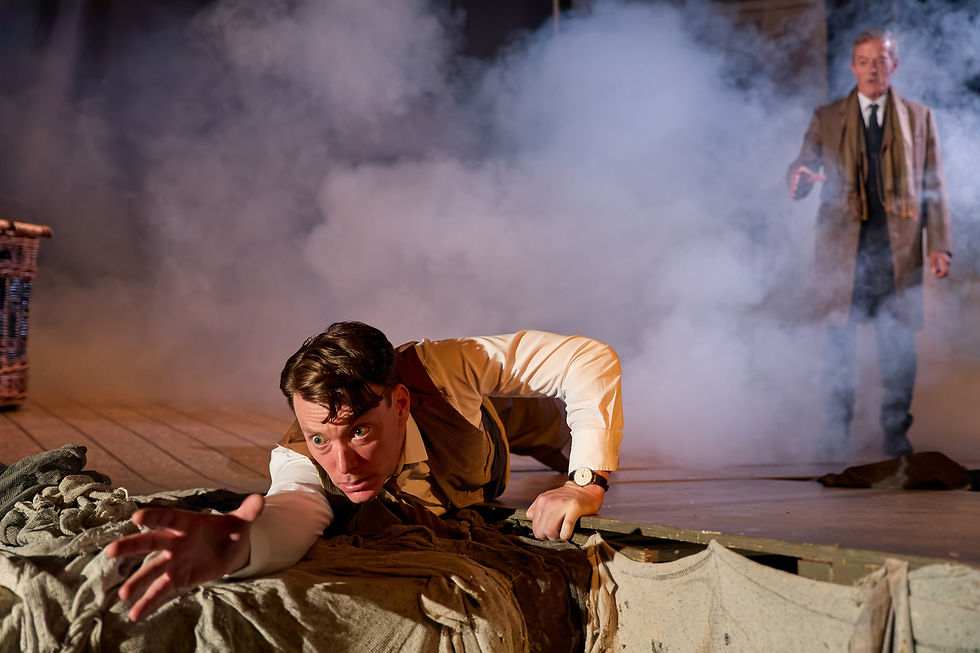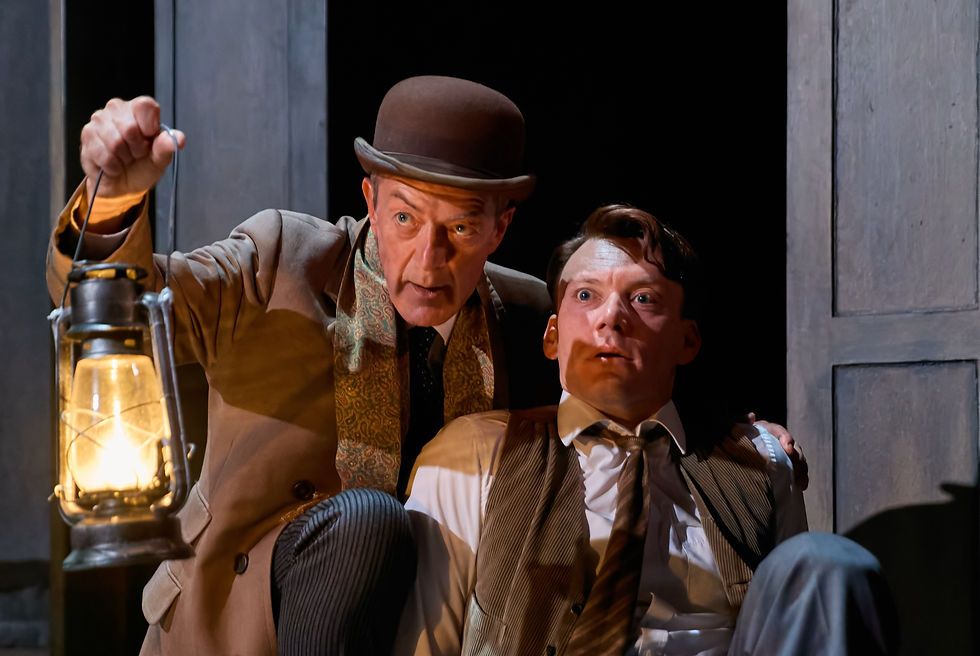The Woman in Black
- Chris O'Rourke
- May 29, 2024
- 3 min read

Mark Hawkins and Martin James in The Woman in Black. Image, Mark Douet
***
There are two opposing viewpoints when it comes to the stage version of The Woman in Black. The defence claims it is an excellent stage adaptation of Susan Hill’s 1983 gothic horror novel, that it is the scariest play ever, that it is inventively theatrical, and given that it's the second longest running play in the history of the West End, second only to The Mousetrap, nothing remains to be said. The prosecution, however, attest that it is a horrendously clunky adaptation by Stephen Mallatratt, about as scary as a ghost train ride for under sevens, so theatrically uninventive as to constitute a dressed up movie, and what it says everything about is the problems in theatre if this is being held up as some kind of benchmark. On the evidence of the current touring production at The Gaiety, the division is alive and well, sparking stand ovations amongst some and heavy dozing and clock watching amongst others. Begging the question, were the case to go to trial for a decision, who’d likely win? Alas, sifting through the evidence, the jury might well find in favour of the prosecution.
As a Gothic scare, The Woman in Black proves less Mary Shelley’s Frankenstein so much as Abbot and Costello Meet Frankenstein. Or Carry on Screaming. More laughs than scares, with what scares there are cheaply achieved and laughable. Indeed, those hoping for something akin to the genuinely scary 2012 movie starring Daniel Radcliffe will need to manage their expectations. Mallatratt’s play within a play making for a remarkably dull slice of story telling theatre. A two hander, with a ghostly third and a scene stealing dog name Spider, begins with a prologue to a prologue to the setup for the story. For what feels like half the show all we really learn is it was 9.00pm on Christmas Eve, old Mister Kipps urgently needs to tell his five hour ghost story (which he obviously survived) and an actor is trying help him do so in a theatre in the 1950s. Exposition heavy, it’s tell-not-show, short scene narrative is structured like a screenplay with scenes forever fading in and out of black. The action jumping back and forth in time as the young solicitor Kipps visits a scary mansion where a women recently died. Throw in a handful of Gothic tropes; islands accessed only when the tide is out, quicksand, dead children, spooky graveyards, suspicious villagers, pea soup fog and things that go bump in the night, and we’re off at the banshee races. Falling over countless hurdles as it trundles along till its twist in the tale ending.

Martin James and Mark Hawkins in The Woman in Black. Image, Mark Douet
Take Michael Holt’s clunky design aspiring to be a movie set; a grey draped stage with a gauze curtain, a multi-purpose basket and door of mysterious import. Relying on shadowed projections and The Gaiety’s iconic interior to do most of the mood setting. Meanwhile Kevin Sleep's hyperactive lights play Russian roulette with mood and accuracy. Robin Hereford’s fretful direction rushing about like a terrified child trying to dodge raindrops. Leaving Mark Hawkins as the histrionic actor doubling up as the younger Kipps to keep things moving along. The whole putting immense weight on Malcolm James as the reluctant Olivier. The superb James as the older Kipps shouldering responsibility for what makes The Woman in Black work. James turning in an award worthy performance as a veritable cast of thousands.
First produced in 1987, The Woman in Black’s 'jumping from the shadows shouting boo' scare tactics can still jolt on occasion, especially for those nervously inclined. But that’s because of the shock of surprise. Granted, a rocking chair and curious locked door try generate a little tension. But too many long pauses and ghost train theatrics leave its endless pregnant pauses turning out to be phantom pregnancies. But it’s theatre, they say. Use your imagination, they tell us often enough. You might be imagining what a good design, writer and director might have looked like. Even so, The Woman in Black’s old world ghost story is infused with old nostalgic charm. And nostalgia never goes out of fashion.
The Woman in Black, adapted by Stephen Mallatratt from the novel by Susan Hill, runs at The Gaiety Theatre until June 1.
For more information visit The Gaiety Theatre





















